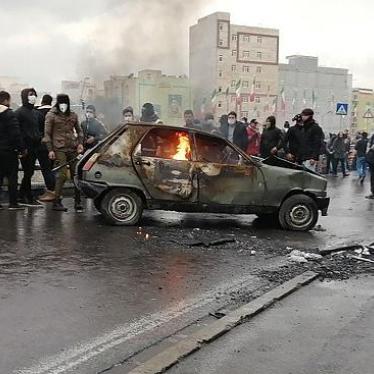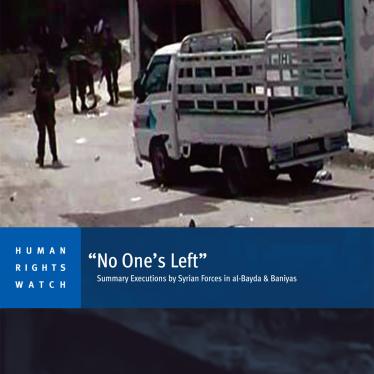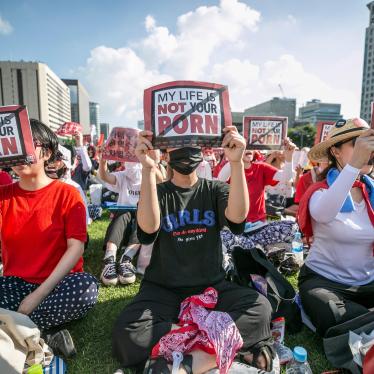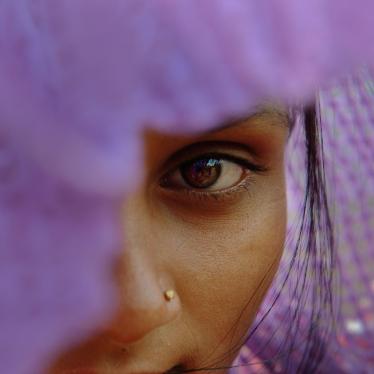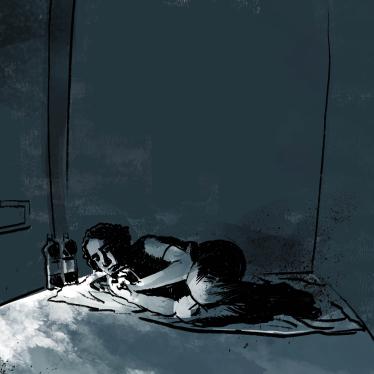(Cairo) - Syria should cease use of live fire and other excessive force against protesters, as it did on March 18and 20, 2011, in the southern town of Daraa, leaving at least five people dead, Human Rights Watch said today.
Sunday, March 20 marked the third day of protests in Daraa, where government forces yet again fired on protesters and used teargas to break up a public gathering, killing one person and injuring dozens of others, according to media reports. Today's fatality brings the total number of protesters killed in Daraa to at least five.
"The Syrian government has shown no qualms about shooting dead its own citizens for speaking out," said Sarah Leah Whitson, Middle East and North Africa director at Human Rights Watch. "Syrians have shown incredible courage in daring to protest publicly against one of the most repressive governments in the region, and they shouldn't have to pay with their lives."
Security forces used teargas and fired on protesters who gathered in the town. An eyewitness speaking on a BBC Arabic television broadcast claimed they used teargas in far greater quantities on Sunday than during Friday's protests. Today's protests also reportedly turned violent with the BBC reporting that some protesters in Daraa set fire to several buildings including the headquarters of the ruling Baath Party.
On March 18, following Friday prayer, several thousand protesters had marched from the al-Omari Mosque in the southern city of Daraa, calling for greater political freedom and accusing members of the government of corruption, according to a resident of the suburbs of Daraa who spoke to Human Rights Watch. Media reports provided similar accounts. Footage of the events on YouTube show security forces using water cannons to disperse protesters, but later, the security forces started firing at the protesters.
According to Reuters, security forces fired on and killed Wissam Ayyash, Mahmoud al-Jawabra, and Ayham al-Hariri. A fourth protester, Adnan Akrad, died on Saturday from wounds also sustained by live ammunition used by Syrian security forces. Another YouTube video shows a body being carried from the crowd, covered in blood, with the sound of repeated gunfire in the background. Human Rights Watch was unable to confirm independently the names of the dead. A resident in Daraa told Human Rights Watch on March 19 that he understood four people had been killed and that two bodies were returned to their families on Friday. The residents also heard that some of the wounded had been taken by helicopters to unknown destinations. They believed that there were approximately 35 other civilians wounded and 15 security men who were transported away by helicopter.
On March 19, security forces also used teargas to disperse thousands of mourners who gathered for the funeral of Ayyash and al-Jawabra who had been killed. A resident from Daraa told Human Rights Watch:
"After the burial of the two men, ... people left the cemetery chanting that after today there will not be any fear. Security members met them at the bridge with teargas canisters and later used bullets to disperse them."
"The Syrian government's attack on the funeral procession only adds insult to injury," said Whitson. "Syrian authorities promised to investigate, but such promises ring hollow while the government continues to attack Syrians to for exercising their rights to public assembly."
Authorities also restricted communications and movement from Daraa on Friday and Saturday. Two Syrian activists told Human Rights Watch on March 19 that the government had disconnected all landlines and interrupted cell phone service in the town of Daraa, though by March 20 telephone communication was restored. Meanwhile, authorities have reportedly sealed the city of Daraa, allowing people to leave but prohibiting anyone from entering.
The Syrian state news agency SANA announced on March 19 that the Ministry of Interior would form a committee to investigate Friday's "regrettable" events, and would respond with all measures deemed necessary after the committee's investigation. On March 20, the government sent a delegation to Daraa, and announced through SANA that 15 children from the town who had been arrested weeks earlier for anti-government graffiti would be released immediately. Friday's protest in Daraa was precipitated by the arrests of the group of schoolchildren.
This is not the first time that Syrian forces have used lethal force to break up a demonstration. On March 21, 2010, security forces fired at a group of Kurds celebrating Nowruz (Kurdish New Year) in Northern Syria, killing one person and wounding others. Two years previously, in March 2008, Syrian internal security forces had also opened fire on Kurds celebrating Nowruz in the town of Qamishli in northeastern Syria, killing three and wounding five others. To Human Rights Watch's knowledge, the authorities did not investigate these shooting incidents and no security official has ever been held accountable.
Human Rights Watch said that in policing demonstrations, security forces should abide by the United Nations Basic Principles on the Use of Force and Firearms by Law Enforcement Officials. These international standards call on law enforcement officials to apply nonviolent means before resorting to the use of force, and then they may only use force in proportion to the seriousness of the threat against them. Security forces should use lethal force only when strictly necessary to protect lives. Article 21 of the International Covenant on Civil and Political Rights (ICCPR), to which Syria is a party, guarantees the right of peaceful assembly and obliges states to ensure that the right can be effectively exercised. Article 6 of the ICCPR also prohibits the arbitrary deprivation of life.
